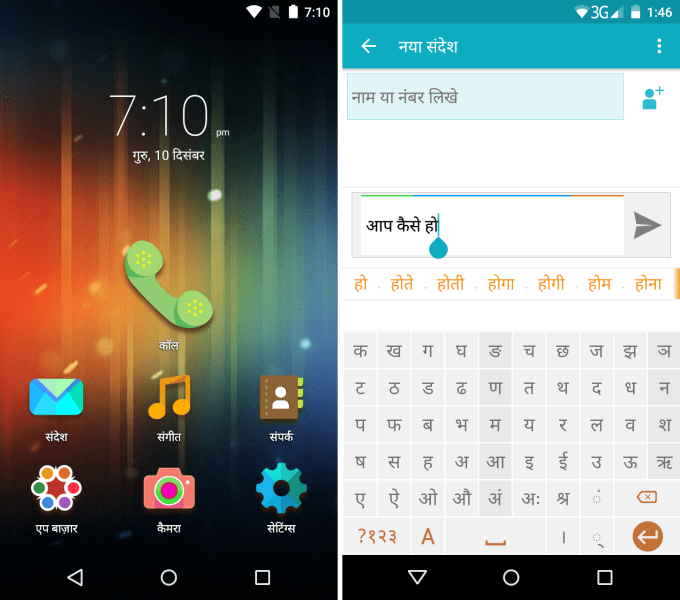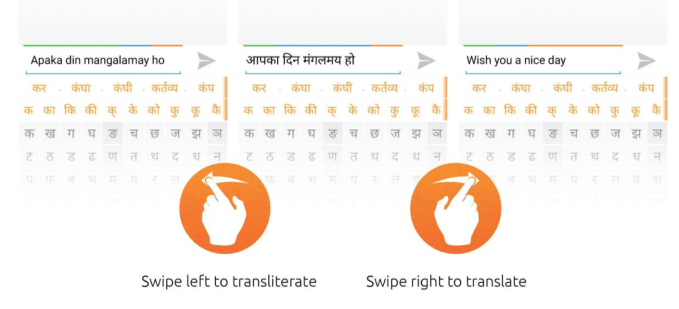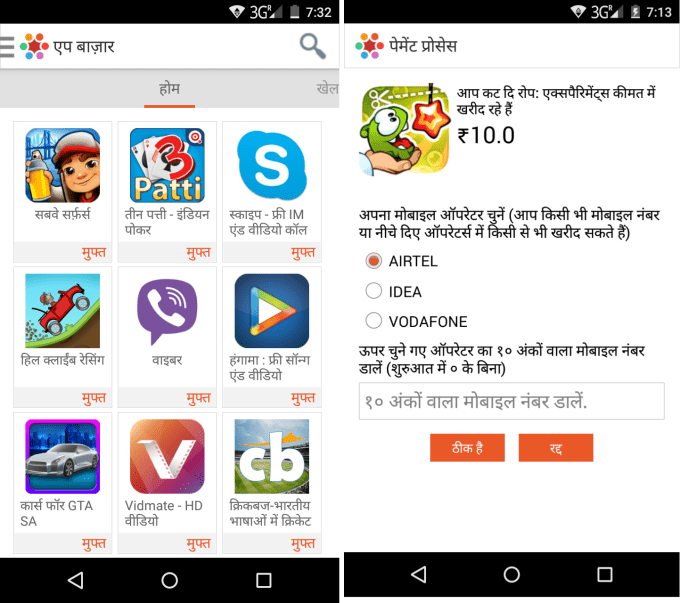If you want proof that Android is the operating system of emerging markets, look no further than Indus OS. The company, formerly known as Firstouch, is tweaking the Google-run operating system to the unique demands and culture of India. And it’s raised $5 million in fresh funding to push on with its lofty target of reaching one billion emerging market users.
This Series A round was led by Omidyar Network, the “philanthropic” venture capital firm started by eBay founder Pierre Omidyar and his wife Pam, and it follows smaller investments from India-based angel investors.
In its bid to make Android friendly to non-smartphone users in rural India, Firstouch, as the company was known prior to today, places significant focus on the user interface and language support, but it goes beyond that. The genesis of the company is that smartphone penetration has stagnated in India despite the cost of a device falling to below $30. Indus OS believes that one of the primary problems is complexity, and it is retooling Android accordingly to help hundreds of millions of Indians to get online through a smartphone.
The company, which said it has spent more than three years researching consumer attitudes to mobile devices and possible technology solutions, has a number of devices in-market now thanks to a partnership with Indian phone maker Micromax — which bundled its software on selected devices last year — but it is aiming to do a lot more.
“We’re figuring out what we need to do to provide people with their first internet device,” Rakesh Deshmukh, Indus OS CEO and one of the trio of IIT-Mumbai graduates who founded the company, explained to TechCrunch in a phone interview.
“The language options [in India] are very limited [and] there’s no company developing solutions for these consumers. It’s a big market and big problem,” he added.

Hindi and English are India’s official languages, but 22 others are officially recognized. The top four alternatives are estimated to be spoken by at least 10 million people each. So it stands to reason that a device that just caters to a few of that selection is going to have a somewhat limited appeal across the whole of India.
Indus OS covers 12 languages right now. The team is working to add more, but it has also completed a notable tie-in with Department of Electronic and Information Technology (DeitY) which will see it introduce text-to-speech technology for regional languages, a feature that will be baked into its operating system.
Deshmukh said he believes that, with the help of new OEM partners in the $200 handset space that it targets, this DeitY partnership could boost the company’s reach to tier-two and tier-three cities and push Indus OS closer to its goal of bringing 300 million Indian consumers online over the next five years.
Design is another major element to what the company is developing. More specifically, it is trying to bridge the gap between the modern smartphone and the gamut of customization options availavle, and the more limited but straightforward experience of ‘dumb’ cellphones.
“People don’t know how to operate a smartphone and have very limited understanding of technology,” said Deshmukh, citing multiple field surveys and sessions with Indians in rural areas. “We want a simple interface to help people shift from a feature phone to a smartphone easily. We found, for example, that many are more comfortable with hard keys, and color-coding such as green and red for calls.”
Other tweaks aimed to bridging cultural and use case gaps include a nifty real-time translation tool which enables users to simply swipe to translate text from one language into another. The feature works when both sending and receiving messages.

Then there’s the company’s app store — App Bazaar — which doesn’t require an email address or credit card to active an account. That might sound trivial in Western markets, but it’s a serious barrier in India and other parts of the emerging world.
Right now, App Bazaar has 15,000 apps — which is far fewer than the millions in the Google Play Store — but Deshmukh said 45 of the top 100 are present and the company intends to stock all 100 (and more) within this year.

The critical part of the company’s mission is partnerships because, as a software maker, it isn’t selling hardware or operating a consumer brand. (Although it intends to be more visible so that people will pick Indus OS-powered devices when they shop for a phone). Its software is installed on 20 devices from Micromax — which have racked up over two millions sales these past six months — but it intends to broaden out and cut deals with at least two more partners — who pay to license the software — and increase its community to 20 million devices in market this year.
It also working to increase its team of 70 to 200, with one project on the horizon being an Android ROM. (It is currently advertising for nine roles, including developer positions and a CFO, on its website.) That ROM could be installed on other (more expensive) Android devices to enable the company to grow its userbase beyond entry-level and budget devices.
Then there’s international expansion, too.
Indus OS moved into Bangladesh last year, and Deshmukh told us that he’d like to add another overseas market to that list before the end of 2016. He said the company will spend a few months looking into which expansion destination it might hit next.
Deshmukh is optimistic of the potential of a fuller international rollout — perhaps into Africa, Southeast Asia and beyond — once Indus OS has the basics of its platform nailed down and proven at scale in India. But, he added, such a move would require additional fundraising and would happen further down the line.
